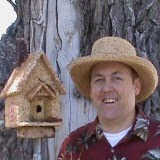
Have Several Sources of Nutrition. Hummingbirds are attracted to items of are attracted to items of bright colors. It is good to have various plant life in your yard that fits that description.







Immature DescriptionImmature
The Hooded Warbler is strongly territorial on its wintering grounds. Males and females use different habitats: males in mature forest, and females in scrubbier forest and seasonally flooded areas. If a male is removed, a female in adjacent scrub will not move into the male's territory.
Eating Habits:
The main food is small insects, spiders and other small arthropods. On the wintering grounds, birds typically forage lower in the canopy on down to the ground. Males and females may forage at different heights on the breeding grounds, with breeding males usually found feeding at the highest parts of the canopy. Food is usually captured by hawking, hovering at the leaf and gleaning.
Measurements:
Both Sexes
Length
5.1 in13 cm
Weight
0.3–0.4 oz 9–12 g
Other Names
Calls
According to the BBS, the highest densities of hooded warblers are
generally found with a more extensive shrub layer and larger areas of contin-
uous forest. The BBS shows an insignificant increase in population on
a continental basis, but a significant increase in the eastern part of this
bird’s range over the past 30 years.
You will mostly find this Hooded Warbler in Eastern North America in the Summer time, and in the Eastern South America in the Winter time.
Maybe today will be the day ther YOU see a Hooded Warbler, but now you know a little more when you spot one.
For more information on how to preserve bird wildlife, visit: http://www.wildlife-houses.com/
Happy bird trails to you!!!!!
